Ford to Quebec doctors amid compensation dispute: ‘Call me’
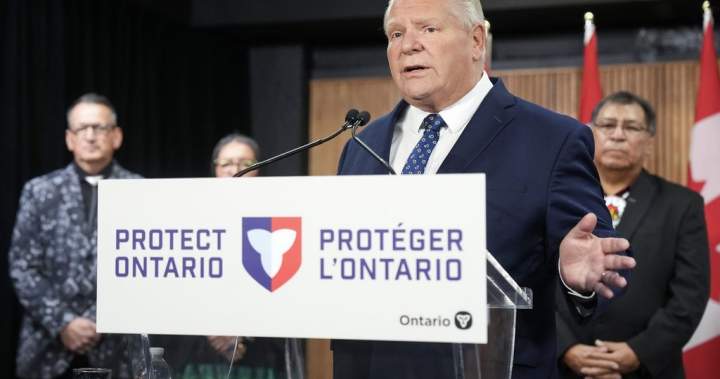
Ontario Premier Doug Ford has a simple message to Quebec doctors amid their ongoing compensation dispute with the provincial government: “Call me.”
“Call 1-800-Doug Ford, all the docs and come by, call me on my cellphone, it’s on the internet, people are taking advantage of it now,” Ford said Wednesday. “Come by and we’ll have you working real quick. I’d love to see the doctors, nurses, would like to see anyone in health care come to Ontario because we’re a growing community.”
The premier’s comments come amid an ongoing dispute doctors are having with the Quebec government over a controversial bill that changes how they’re paid.
In response, Premier Francois Legault said late Wednesday Ford’s comments were “totally unacceptable,” adding the Ontario premier was showing “a complete lack of judgment.”
Legault said his government is trying to bring significant changes to the health system, a delicate and emotional issue, particularly for doctors.
“We all have major challenges in improving our health care systems in all provinces,” Legault said. “This is not the time for provinces to be undermining each other. It’s time to work together.”
Bill 2 was passed over the weekend in Quebec, which will see a portion of doctors’ compensation linked to performance targets related to the number of patients, particularly vulnerable ones, they care for.
Legault called a special session to rush through the bill, which imposes fines of up to $20,000 per day on doctors who take “concerted action” to challenge the government’s policies.

Such actions could include groups of three or more doctors refusing to teach medical students or deciding to leave the public health system or move to another province.

Get weekly health news
Receive the latest medical news and health information delivered to you every Sunday.
Doctors say the bill amounts to a pay cut and medical specialists on Tuesday said they’re planning a legal challenge, saying it violates individual freedom.
Despite the threat of fines for leaving the province, some have already been considering a move.
The College of Physicians and Surgeons of Ontario told Global News in an email that as of Wednesday, it has received 70 applications for licensure since Oct. 23 from physicians from Quebec. The CPSO said the applications were for either a restricted or independent practice certificate in the province.
“These applications for licensure are currently in progress for the indicated period in 2025; some may be withdrawn or cancelled, so the number does not necessarily reflect the number of physicians who will ultimately be granted a certificate of registration from CPSO,” said a spokesperson for the college.
It added the data does not disclose reasons for the doctors to seek licensure to practice in the province.
For context, the CPSO said it received 19 applications between June 1 and Oct. 22.
Quebec doctors have also been eyeing New Brunswick as another option.
According to New Brunswick’s College of Physicians, the number of Quebec doctors seeking to obtain a licence in the Maritime province was in the low single digits all year. There were three in January, for example, and three in August.
So far this month, that number has spiked to 34.
Vitalite Health Network has also published a new Facebook advertisement, encouraging Quebec doctors to move to the Maritime province and the network says it’s received formal expressions of interest.
“Quebec doctors are continuing to look at New Brunswick as a healthy place to work, be respected, work across teams,” said New Brunswick Health Minister John Dornan.
Though Dornan added no one should be trying to attract already established doctors with incentives like higher pay, but said if people decide to come because they’ve showcased what the province has it’s “perfectly acceptable.”
While some doctors have started looking to other provinces, medical organizations like the Canadian and Ontario Medical Associations are raising concerns.
“When there is a shortage right across Canada, where one in five do not have access to a primary care provider, physician, or nurse practitioner, there’s a great need to keep as many of the physicians you have within every province practicing and enjoying their practice and being able to give their best to patients,” said Dr. Margot Burnell, president of the Canadian Medical Association.
A spokesperson with the Ontario Medical Association echoed Burnell’s sentiments.
“There is a doctor shortage across Canada, and all patients deserve access to physician care,” the OMA wrote. “The OMA has been working with the government to improve physician mobility across Canada, but we do not want to compromise the ability of Canadians to access care by fixing a problem in one province by creating an issue in another.”
Asked what would be the selling points for doctors to come to Ontario, Ford told reporters they’d “roll out the red carpet for you.”
“We’ve already hired over 16,000 doctors, we’re paying for their education in medical school, we’re adding more medical schools,” Ford said. “But the seasoned veteran docs, best quality of life you’ve ever have come by. We’ll roll out the red carpet for you.”
Ford added that Ontario has a “rich” Francophone culture, saying Ontario has more than 600,000 Francophones.
—with files from Global News’ Rebecca Lau, Anna Mandin and Suzanne Lapointe and The Canadian Press

© 2025 Global News, a division of Corus Entertainment Inc.

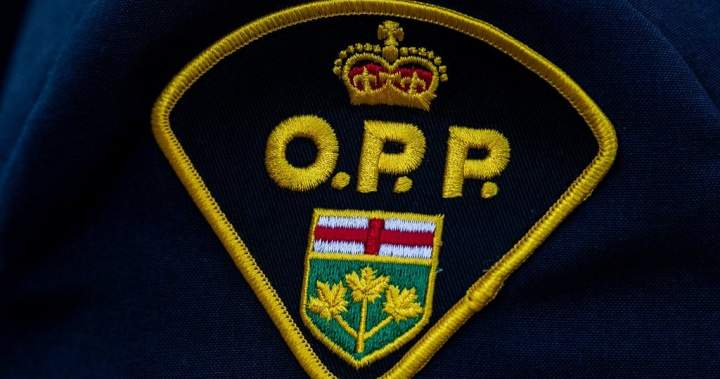
Provincial police say three people have been charged with murder in the death of a man who was reported missing two years ago.
Police say 34-year-old Robbie Thomson, of Smiths Falls, Ont., was reported missing in October 2023.

Get daily National news
Get the day’s top news, political, economic, and current affairs headlines, delivered to your inbox once a day.
They say he has not been found, but investigators have determined he was the victim of a homicide.
Police say three people, ranging in ages 34 to 48, have each been charged with first-degree murder in Thomson’s death.
They say the accused are scheduled to appear in court in Perth, Ont., on Thursday.
Police say there’s no risk to public safety and anyone with information is asked to contact investigators.
© 2025 The Canadian Press
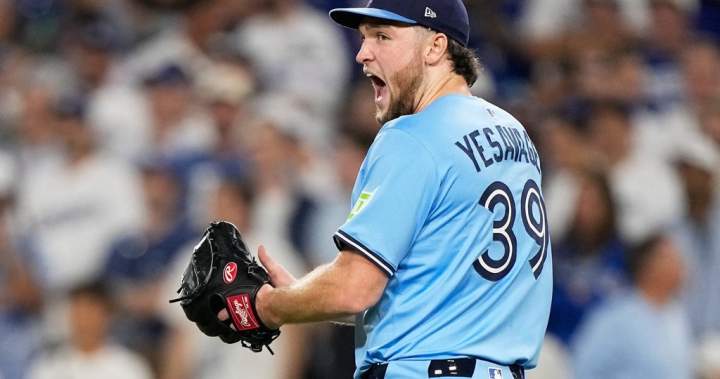
In his shockingly brief Major League Baseball career, Toronto Blue Jays pitcher Trey Yesavage has shown that when he doesn’t have his best stuff, he’s still pretty good.
And when he does have his best stuff? He’s like a demi-god throwing thunderbolts toward the plate.
The latter version took the mound at Dodger Stadium on Wednesday night, and the 22-year-old rookie delivered seven electric innings that were, at once, an iconic moment in Blue Jays history and one of the best pitching performances ever in the World Series.
He’s so new to the Jays that no one has even given him a nickname. Here’s one suggestion: The Treyminator.
Yesavage struck out 12 Los Angeles Dodgers — a lineup with multiple future Hall of Famers — and gave up just three hits, two of them infield singles.
He also didn’t walk anyone, becoming the first pitcher in World Series history to have 12 strikeouts and zero walks in a game.
It was, incredibly, just his eighth major-league start in a season that began in low-A ball in Dunedin.
It was his fifth playoff start; no player has ever made that many postseason appearances after playing in just three regular-season games.
The dazzling performance from the kid was the signature part of Toronto’s 6-1 Game 5 victory over Los Angeles, which leaves the Blue Jays just one win away from a championship.
But it was also indicative of the team’s vibe.
The Blue Jays have a few stars, but they also have a big mess of scrappy underdog types, the kind of guys that manager John Schneider lovingly refers to as “ballplayers.”

Get breaking National news
For news impacting Canada and around the world, sign up for breaking news alerts delivered directly to you when they happen.
The ballplayers were at it again in Game 5. Davis Schneider, inserted into the lineup and the leadoff spot, as George Springer was unable to return from injury, smashed the first pitch he saw from Dodgers starter Blake Snell over the left-field fence for a home run.
Addison Barger had two hits and made a spectacular diving catch in right field. Isiah Kiner-Falefa had an RBI single. Andres Gimenez had a key walk and scored a run.
Amid all that, Vladimir Guerrero, Jr., also followed Schneider’s home run with a solo blast of his own, which, per Sportsnet, came on his hardest swing of the entire season.
It was a very Blue Jays performance in a playoff run that has become defined by the team’s scrappier side.
They don’t rely on superstars — with the notable exception of Guerrero— but the offence, despite a few lapses, has been ruthless.
Through five games, Toronto has outscored Los Angeles 29-18 and outhit them by a 53-37 count. Since suffering that crushing, 18-inning loss in Game 3, the Jays have outscored the Dodgers 12-3.
A defeat that should have drained their confidence was instead a springboard to a pair of resilient wins. Has anyone told the Maple Leafs this is possible?
The World Series had a David-and-Goliath narrative before the Jays had even qualified, with the defending champion Dodgers and their star-laden roster waiting for them.
The disparity was perfectly illustrated by the matchup that pitted Yesavage up against Snell on the mound.
Snell, a two-time Cy Young Award winner, was signed as a free agent last winter to a US$182-million contract, largely for his big-game experience. Yesavage didn’t arrive in the majors until September, and because his entry-level contract is prorated, he’s making about US$57,000 this season.
The two battled to something of a draw in Game 1 before the Jays feasted on the Dodgers’ bullpen to blow that game open.
But in Game 5, it was a mismatch in Yesavage’s favour.
With his split-fingered fastball and his slider both working, Yesavage had Los Angeles hitters flailing all night.
He struck out every Dodger batter at least once. Of the 30 split-fingered fastballs he threw, the Dodgers didn’t even make contact with half of them.
It was absurd stuff. Almost cruel. He wasn’t just dealing with All-Stars like Shohei Ohtani, Mookie Betts and Freddie Freeman; he was making them look foolish.
Davis Schneider, speaking to Sportsnet after the game, marvelled at the performance of the rookie who spent his season rising through the Jays’ minor-league system, from Dunedin to Vancouver to New Hampshire to Buffalo.
Yesavage had only just arrived, Schneider said, but “it’s like he’s been here 15 years.”
“He’s already one of the best pitchers in the game, I think,” Schneider said. “I haven’t faced him, but the way people take swings off him, it looks like they’ve never seen a pitcher before in their lives. He’s a dog, for sure.”
That dog has put the Blue Jays on the cusp of a World Series championship.
And the team that has been doubted all season is no longer the underdog.
After the Jays beat the Seattle Mariners in American League Championship Series, Guerrero stood on the Rogers Centre turf and said they still needed to finish the job.
“Four more,” he said, meaning the number of wins that were still needed.
And now, it’s down to just one.
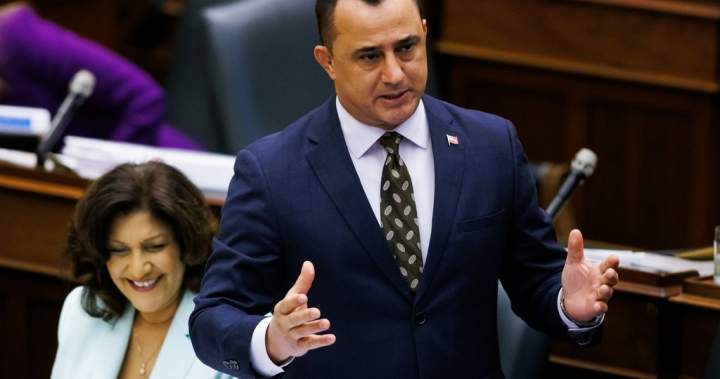
When Ashley Ferreira’s five-year-old son was diagnosed with autism in 2020 she never imagined that a five-year wait lay ahead for him to get access to government-funded core therapies.
“I thought that the diagnosis came with help,” she said. “It wasn’t until I started joining Facebook groups like the Ontario Autism Coalition that I was like, ‘Oh.’ It was a slap in the face.”
Families had been reporting wait times for access to core services under the Ontario Autism Program creeping upward in the past several years, so advocates set about doing a survey of the community.
Families starting to receive funding now to pay for core therapies including applied behaviour analysis, speech language pathology and occupational therapy are people who registered for the program five years ago, the survey found.
Children, Community and Social Services Minister Michael Parsa refused to say whether that is an acceptable length of time.
“We want to make sure that every family is supported, every child and every youth in this province has the opportunity to succeed and thrive,” he said when asked outside the legislature last week.
Figures obtained by the coalition through a freedom-of-information request show that more than 84,000 children are registered in the Ontario Autism Program to seek autism services and 19,600 of them are receiving funding to access core services.
Parsa touted the government’s record of more than doubling the budget for the autism program — to an expected $778 million this year — and expanding the services that qualify for funding as core therapy to include occupational therapy, speech language pathology and mental health supports.

As well, the Progressive Conservative government has introduced “pillars” families can access on a time-limited basis as they wait for funding for core services, including an entry-to-school program, urgent response services and support training for families.
But Ferreira said they were not relevant for her son, and what he really needed was the core services.

Get daily National news
Get the day’s top news, political, economic, and current affairs headlines, delivered to your inbox once a day.
“I see the pillars as Band-Aid solutions,” she said. “They’re not continued support. Our children need continued support.”
Ferreira’s family has been paying out of pocket for the past five years for therapy for her son while she waited for government funding, accruing more than $100,000 in debt, she estimates.
“We’ve been paying out of pocket for five years for early intervention,” she said. “So he’s thriving at the moment, no thanks to the government.”
Ontario Autism Coalition president Alina Cameron said the government’s autism program is not providing enough help for the children who need it.
“Based on the 2021 Stats Can census, there are at least one in every 32 children in Ontario who are autistic,” she said at a recent press conference.
“That’s not rare. That’s a population, and right now it’s a population being failed by this government. There’s a human cost. Families are paying the price. Our survey found that a staggering percentage of autistic children and youth, 44 per cent, have at least one parent or caregiver who cannot work because of the demands of care.”
NDP critic Alexa Gilmour said the autism coalition’s survey is eye opening.
“It is a damning picture that it paints of the Conservative government that is utterly failing our most vulnerable children and families,” she said at the press conference.
“It’s asking them to trust in a safety net that isn’t there to catch them, that they have refused to provide. Less than one quarter of children registered for the Ontario Autism Program have been given access to the therapy that they were promised.”

© 2025 The Canadian Press
-

 Uncategorized5 months ago
Uncategorized5 months agoShop Proud, Eat Proud, Be Proud — Ottawa Canada Day Market This June 28th
-

 5 months ago
5 months agoRing of Fire road to bring prosperity to First Nation, problems for caribou: report
-

 5 months ago
5 months agoMeasles circulating in northeastern B.C. community, health officials warn
-

 5 months ago
5 months agoCanada’s world junior trial saw juries tossed, intense testimony. Here’s a recap
-

 5 months ago
5 months agoFormer major leaguer, Jays doctor Ron Taylor dies
-

 4 months ago
4 months ago161 bricks of suspected cocaine found on truck trying to cross Canada-U.S. border
-
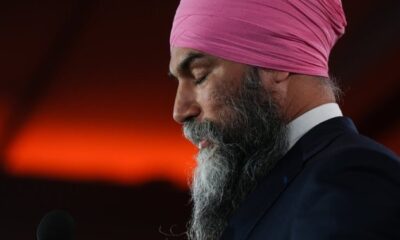
 5 months ago
5 months agoJagmeet Singh apologizes for attending Kendrick Lamar concert after Drake calls him out
-
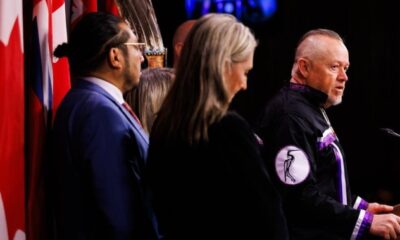
 5 months ago
5 months agoAnishinabek Nation chief says he briefed Ontario police on protests against Bill 5





